Initially, I positioned it at my lower back and—so slowly, so gently—arched over it. My hips stayed on the floor, so I wasn’t adding extra weight. I could barely drape myself over it, much less roll up or down. Every muscle in my body braced against the stretch.
The next day, I kept my hips grounded but slowly rolled the wheel along my spine by pushing into my feet. When I reached my upper back and traps—the muscles I hunch up to my ears when I’m typing—I had to ease off.
Each day, I added a little more pressure, rolling out for longer. Less than three weeks later, I can fully lift my hips off the floor and let my body weight rest—and actually relax—on the wheel. Now, I start with a full spine rollout, then move my arms overhead as I focus on my upper back. As I’ve loosened up, I’ve gotten small, satisfying pops as my back cracks.
You can also lay passively on the Chirp wheel, allowing all of the surrounding muscles to relax and getting a deep opening across the chest and front shoulders.
A Few Small Downsides
While I’ve had a great experience with my Chirp wheel, some Reddit users have mentioned that the plastic has cracked under their weight. To lessen this risk, make sure the wheel is centered on your spine—it’s easy for it to get off-kilter, which can create uneven pressure. The company claims the wheel supports up to 500 lbs (227 kg) and offers a one-year warranty if the core cracks.
Other tools, like foam rollers and massage guns, are more versatile than the Chirp—though I never experienced as much relief with either. This wheel is designed for the spine, and while you can use it to awkwardly massage the hamstring or calf, it’s not ideal for much else. With a lacrosse ball or massage gun, you can pinpoint specific muscles in a way the Chirp can’t.
But at $50 for the 6-inch wheel, it’s cheaper than most recovery gadgets, and there’s no motor to break or battery life to contend with. I saw results faster than with stretching alone, but it still took about a week of daily sessions to notice major improvements.
Chirp
Brain Fog Banished
It’s been a month, but I’m not exaggerating when I say I can’t imagine life without my Chirp wheel now. I use it during mid-day computer breaks, and it’s the first thing I reach for when I get home from the gym. My daily comfort has improved, and my exercises are starting to feel much easier. When I took a recent Pilates class (which requires spinal mobility—not usually my forte), I no longer felt like the Tin Man. My spine felt flexy and my movements fluid. I felt more in control of my core.
The most surprising side effect? Eliminating my brain fog. I used to experience it almost daily—sometimes to a debilitating level where I’d need breathwork or a nap to regain focus. After a week on this thing, I was—and remain—brain fog-free. My best guess is that the brain fog was stemming from tight muscles in my neck and upper back, which could restrict blood flow and cause tension. There is currently no research directly linking tight muscles and brain fog, so this is just conjecture on my part. But for me, it’s a pronounced effect, and I struggle to see it as a mere coincidence.
No single tool is going to fix years of poor posture overnight, but the Chirp Wheel has made a real difference. While sadly it’s too early to know for sure if my dreaded hump has gone down, my upper back and neck are certainly more relaxed, my muscles have loosened up so they don’t feel like rocks, and I’m much more aware of my posture throughout the day.
Moreover, using it throughout the work day makes me feel like I’m taking small steps to combat my tech neck. It’s simple, effective, and—unlike the countless recovery tools I’ve tried before—something I actually want to keep using. If you too slump in your seat, it’s definitely worth adding to your routine.

